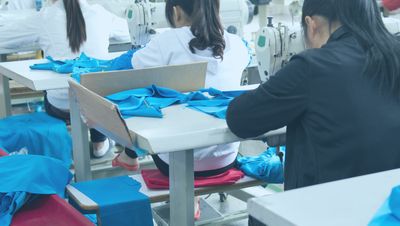"Dust thou art, and unto dust shalt thou return." Whoever wrote that famous line probably didn't realize that dust actually contains a secret weapon.
"We have developed the capability to turn dust into data that can be used to trace problems in the supply chain."
Far from being a collection of mere inanimate particles, dust is now recognized as a powerful tool filled with living sensors. Studying those sensors can reveal an object's location history, which can help brands fight unethical manufacturing.
"We have developed the capability to turn dust into data that can be used to trace problems in the supply chain," explains Jessica Green, the CEO of Phylagen, a San-Francisco-based company that she co-founded in 2014.
So how does the technology work?
Dust gathers everywhere—on our bodies, on objects—and that dust contains microbes like bacteria and viruses. Just as we humans have our own unique microbiomes, research has shown that physical locations have their own identifiable patterns of microbes as well. Visiting a place means you may pick up its microbial fingerprint in the dust that settles on you. The DNA of those microbes can later be sequenced in a lab and matched back to the place of origin.
"Your environment is constantly imprinted on you and vice versa," says Justin Gallivan, the director of the Biotechnology Office at DARPA, the research and defense arm of the Pentagon, which is funding Phylagen. "If we have a microbial map of the world," he posits, "can we infer an object's transit history?"
So far, Phylagen has shown that it's possible to identify where a ship came from based on the unique microbial populations it picked up at different naval ports. In another experiment, the sampling technology allowed researchers to determine where a person had walked within 1 kilometer in San Francisco, because of the microbes picked up by their shoes.
One application of this technology is to help companies that make products abroad. Such companies are very interested in determining exactly where their products are coming from, especially if foreign subcontractors are involved.
"In retail and apparel, often the facilities performing the subcontracting are not up to the same code that the brands require their suppliers to be, so there could be poor working conditions," says Roxana Hickey, a data scientist at Phylagen. "A supplier might use a subcontractor to save on the bottom line, but unethical practices are very damaging to the brand."
Before this technology was developed, brands sometimes faced a challenge figuring out what was going on in their supply chain. But now a product can be tested upon arrival in the States; its microbial signature can theoretically be analyzed and matched against a reference database to help determine if its DNA pattern matches that of the place where the product was purported to have been made.
Phylagen declined to elaborate further about how their process works, such as how they are building a database of reference samples, and how consistent a microbial population remains across a given location.
As the technology grows more robust, though, one could imagine numerous other applications, like in police work and forensics. But today, Phylagen is solely focused on helping commercial entities bring greater transparency to their operations so they can root out unauthorized subcontracting.
Then those unethical suppliers can – shall we say – bite the dust.
Kira Peikoff was the editor-in-chief of Leaps.org from 2017 to 2021. As a journalist, her work has appeared in The New York Times, Newsweek, Nautilus, Popular Mechanics, The New York Academy of Sciences, and other outlets. She is also the author of four suspense novels that explore controversial issues arising from scientific innovation: Living Proof, No Time to Die, Die Again Tomorrow, and Mother Knows Best. Peikoff holds a B.A. in Journalism from New York University and an M.S. in Bioethics from Columbia University. She lives in New Jersey with her husband and two young sons. Follow her on Twitter @KiraPeikoff.
